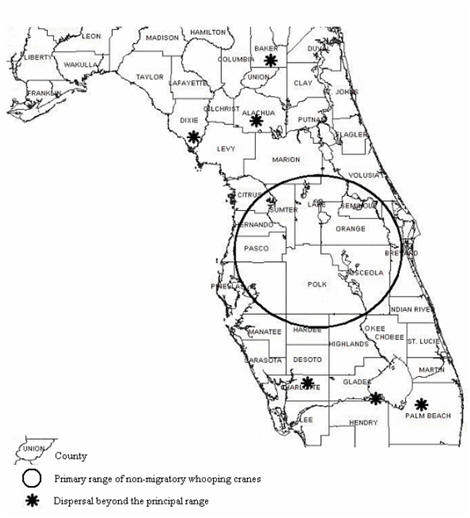Humans are capable of affecting the survival of species both positively and negatively. As indicated earlier, whooping cranes are sometimes mistakenly hunted or illegally shoot, and are known to collide with power lines when they migrate, resulting in a population decline. Generally, the slightest disturbance can cause great harm to such a small group. Nevertheless, due to our innate genetic disposition to maintain biodiversity and reduce the risk of untimely extinctions, conservations efforts are often put into place by private and public organizations to manage ecosystems and implement strategies that could help mitigate the effects of species extinction. To date, the Canadian-American plan to get the whooping crane off the endangered list has been one of the longest and most expensive efforts in North America (Struzik, 1999).
Starting in 1937, the United States government took the first step in saving the crane population that migrated from Wood Buffalo National Park in Northern Canada to the Gulf of Texas, by creating a wintering safe place in Texas called the Aransas National Wildlife Refuge (ANWR). The ANWR is one of 551 National Wildlife Refuges across the United States and is managed by the U.S. Fish and Wildlife Service (USFWS). This refuge, in particular, was established for migratory birds, which included whooping cranes.
Since whooping cranes lay two eggs per year and usually only a single hatchling survives to fledging age (one chick often dies due to predation or lack of food availability), scientists take one egg and raise the bird in captivity, while the other chick is raised naturally by its parents. This effort began in Florida in 1993 to re-establish a once prominent non-migratory flock in central Florida, by the Whooping Crane Recovery Team – a governing body consisting of Canadian and American Ornithologists and biologists that provide policy recommendations to the USFWS and Canadian Wildlife Service. At present, non-migratory whooping cranes are able to build nests and lay their own eggs without human intervention (Figure 7).

In 1975, the WCRT had suggested the possibility of a cross-fostering experiment between whooping cranes and sandhill cranes, as a way to reintroduce a non-migratory flock of whooping cranes in the Southeast. The project would entail putting whooping crane eggs into sandhill nests where the sandhill cranes would take on the role of surrogate parents. When the whooping cranes became adults, however, they were not interested in the other whooping cranes due to imprinting on their sandhill parents. Hence, WCRT recommended the program be discontinued in 1989.In 2001, a third flock was started in Necedah National Wildlife Refuge (NNWR) in Wisconsin. The purpose of this project was to reintroduce an Eastern population of self-sustaining migratory whooping cranes that would winter in Florida and return back to Wisconsin in the spring. To accomplish this goal, a flock of chicks are first raised in captivity at the Patuxent Wildlife Research Center (PWRC) in Maryland by humans dressed in white crane costumes. When the whooping cranes are 50 days old, they are brought to Wisconsin to be trained how to fly behind an ultralight aircraft. Once autumn arrives, the flock is led to fly to Chassahowitzka National Wildlife Refuge in Florida for the winter. This migration covers 1987 kilometres, 26 stops, and takes nearly 50 days to complete. The young cranes learn the route and return to Wisconsin on their own without the ultralight the next spring.
Operation Migration is the non-profit organization responsible for the ultralight migrations and is part of a larger group, the Whooping Crane Eastern Partnership (WCEP), which oversees all aspects of the Eastern migratory population. The WCEP consists of nine other non-profit and governmental organizations which have played an active role in reintroducing a population of whooping cranes in the East.